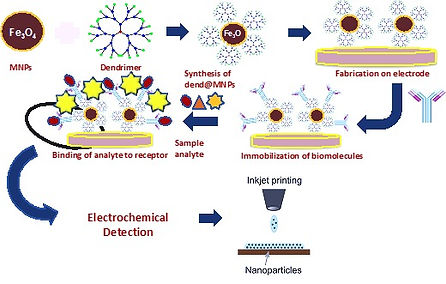SUDESHNA CHANDRA
Material Research Scientist

Research
My current research interests mainly focus on (1) smart multifunctional hybrid nanomaterials and (2) applications of nanomaterials. For the former, my research aims to create novel hybrid nanomaterials based on metal, metal oxides and metal sulfides, dendrimers, upconversion nanomaterials and polymers with controlled morphology, attractive functionalities and targeted properties. For the latter, my research aims at the application of nanomaterials for drug delivery, biosensing, energy and catalysis whilst also investigating the formation mechanisms and process-structure-property relationships. To achieve these goals, my research takes a holistic approach, encompassing the design, synthesis, functionalisation, characterisation and application of various types of nanomaterials.
My research focuses on the development of nanomaterials for biomedical and environmental sustainability applications. A brief description of a few of my projects are mentioned below.




